All bee species are essential pollinators that play a vital role in maintaining healthy ecosystems and ensuring the survival of numerous plant species. Among the approximately 20,000 known bee species, several stand out due to their distinct characteristics and behaviours. This article explores the characteristics, habitats, and pollination behaviours of six of the most well-known species of bees.
Bee Species
| Bee Species | Appearance | Size (cm) | Habitat | Pollination |
| Honey Bees (Apis mellifera) | Golden-yellow with black stripes | 1–1.5 | Man-made hives, tree cavities | Generalist pollinators |
| Bumble Bees (Bombus spp.) | Small, black or grey with pale bands | 1.8 – 4.1 | Underground nests, abandoned rodent burrows | Generalist pollinators |
| Carpenter Bees (Xylocopa spp.) | Shiny, hairless abdomen, black with yellow or white markings | 1.3 – 2.5 | Wood tunnels | Generalist pollinators |
| Leafcutter Bees (Megachile spp.) | Small, black or gray with pale bands | 0.5 – 1.5 | Pre-existing cavities, nest in soft plant material | Generalist pollinators |
| Mason Bees (Osmia spp.) | Metallic blue or green, black with white hairs | 1–1.8 | Pre-existing holes in wood, crevices | Specialist Pollinators |
| Sweat Bees (Halictus spp.) | Small, slender, metallic green or blue | 0.3 – 1.3 | Underground nests, plant stems | Generalist pollinators |
Habitat: Different bee species have varying preferences for nesting sites, ranging from underground nests and pre-existing cavities to man-made hives.
Pollination: Some bees, like honey bees and bumble bees, are generalist pollinators, meaning they visit a wide range of flowers. Others, like mason bees, are specialist pollinators that rely on specific plant species for food.

The Apis mellifera, or honey bee
Honey bees are renowned for their complex social structure and ability to produce honey. They are between one and five centimetres long, with a characteristic golden-yellow body and black stripes. These all-purpose pollinators can be found residing in tree cavities or artificial hives. Honey bees have an intricate communication system in which they use dances to tell other members of the colony where nectar sources are. Their ability to gather pollen and nectar from a wide variety of flower species makes them an important part of agricultural systems and ecosystems all around the world.
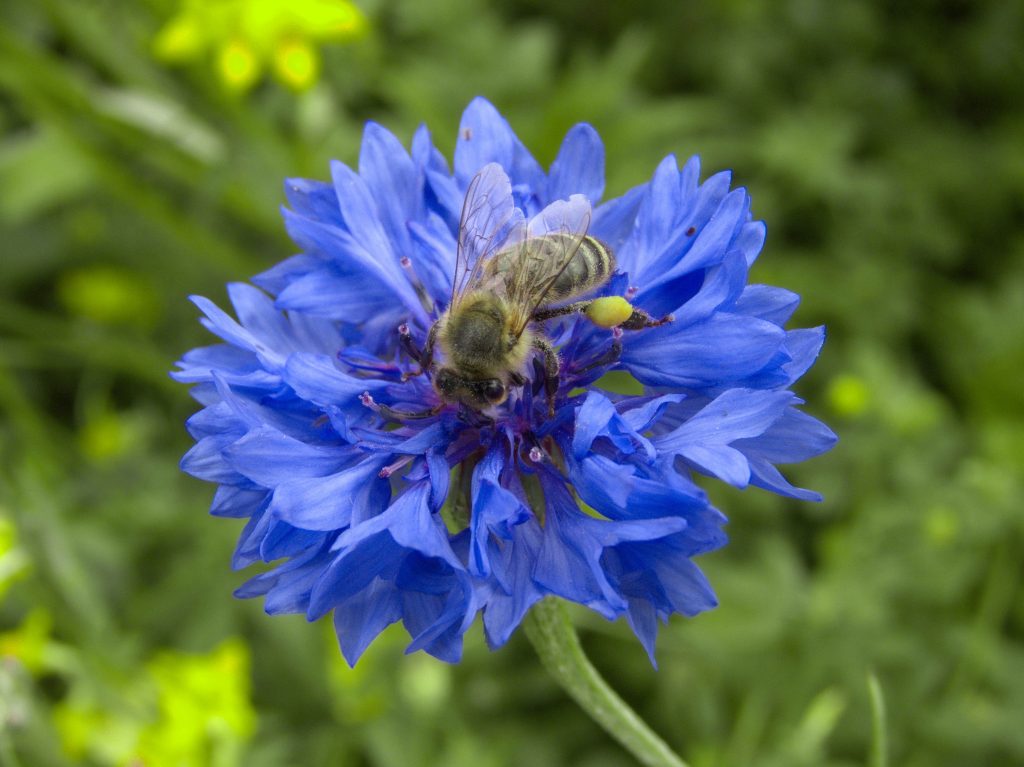
Bumble Bees (Bombus spp.)
Bumble bees are fluffy, plump insects that range in size from 1.8 to 4.1 centimetres. They are distinguished by their unique black and yellow or orange stripes on their bodies. These versatile pollinators establish their tiny, sociable colonies in abandoned rat burrows or underground tunnels. Because of a special behaviour known as “buzz pollination,” bumble bees are very good pollinators because it enables them to reach pollen from blossoms that other bee species cannot. Because of this characteristic, many plant species, including a large number of harvests of fruits and vegetables, depend on bumble bees for their reproduction.
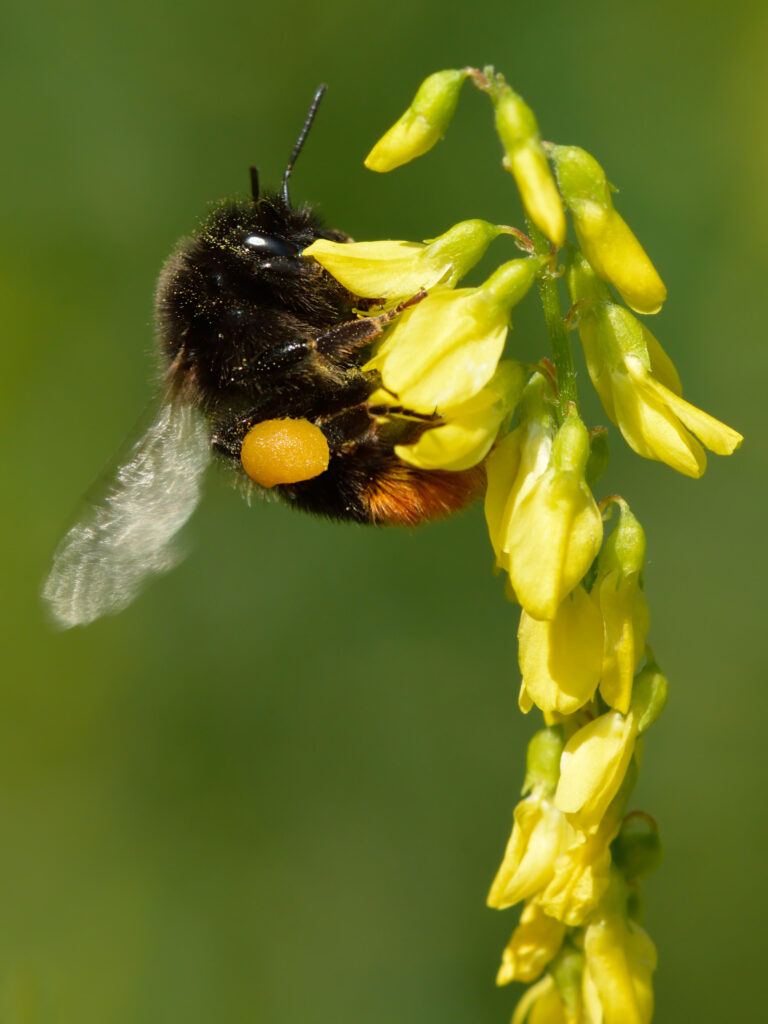
Xylocopa spp., or Carpenter Bees
Carpenter bees are between 1.3 and 2.5 centimetres in length, with a shiny, hairless abdomen. Because of their similar size and colouring, they are frequently confused for bumble bees. As suggested by their name, these solitary bees tunnel into wood to build nests. They visit a variety of flower species because they are generalist pollinators, which makes them essential to the upkeep of varied ecosystems.
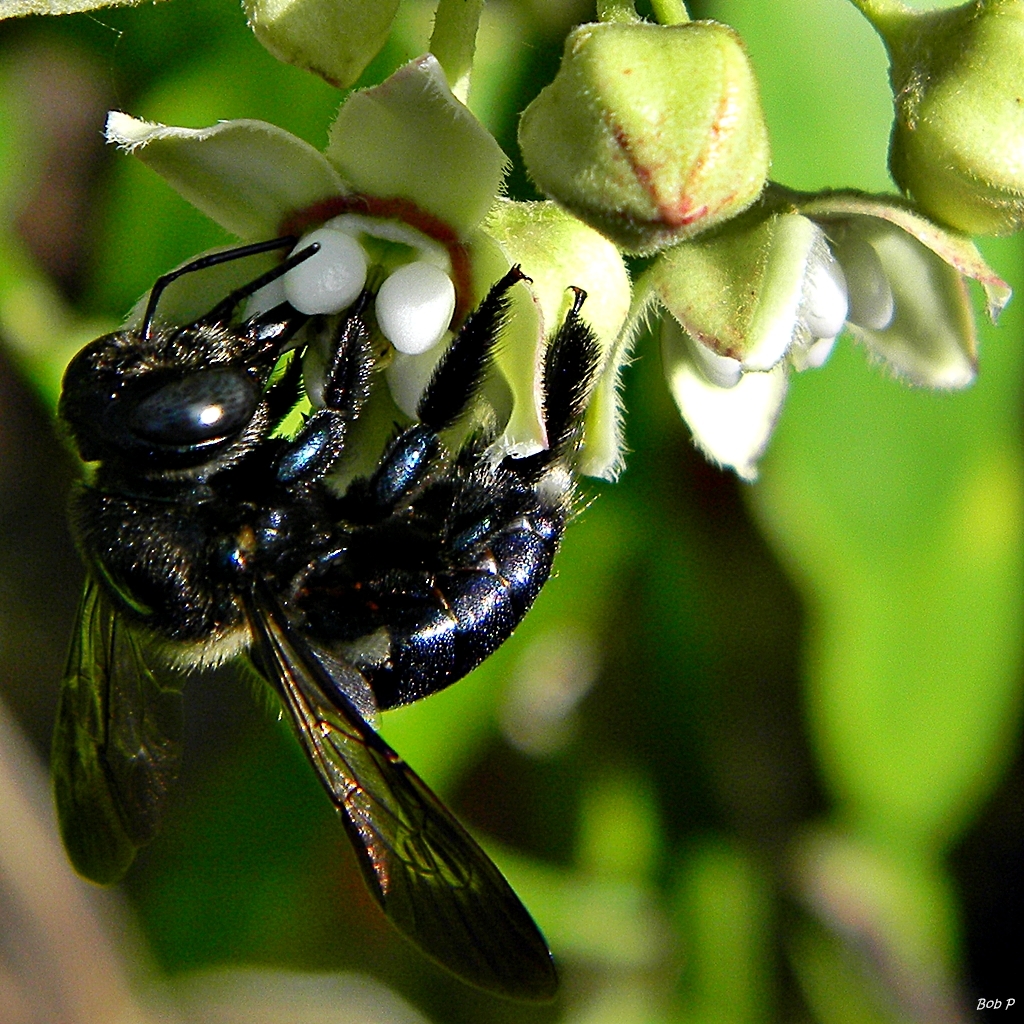
Megachile spp., or leafcutter bees
Leafcutter bees are 0.5 to 1.5 centimetres long, having bodies that are either grey or black with pale bands. These bees build their nests in soft plant matter and pre-existing cavities like holes in wood or plant stems. Leafcutter bees are important pollinators of both wild plants and cultivated crops because they are generalist pollinators. They have a unique nesting habit in which they chop tiny bits of leaf to make nest cells for their young.
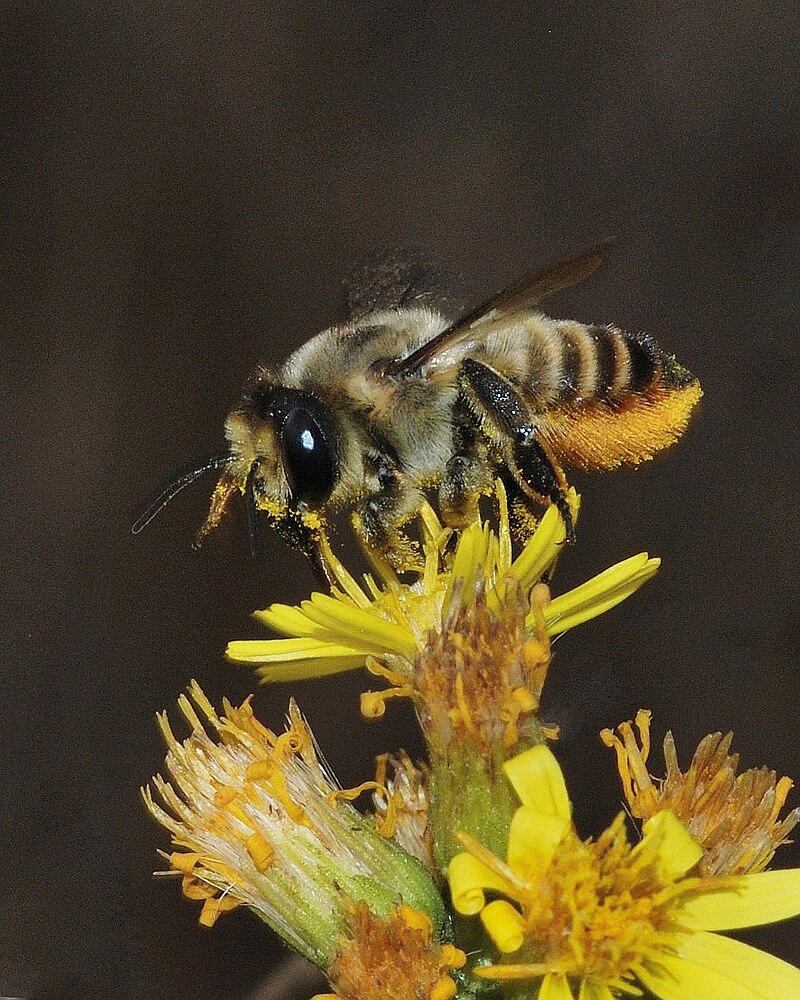
Osmia spp., or Mason Bees.
Mason bees have bodies that are metallic blue or green, and they have black and white hairs. They are between one and two centimetres long. They are specialised pollinators that depend on particular plant species for sustenance. Mason bees build their nests in pre-existing cracks or holes, dividing the nest into several chambers with the help of mud. Because of this characteristic, they are vital pollinators for some plant species, such as fruit trees, which need particular techniques for pollination.
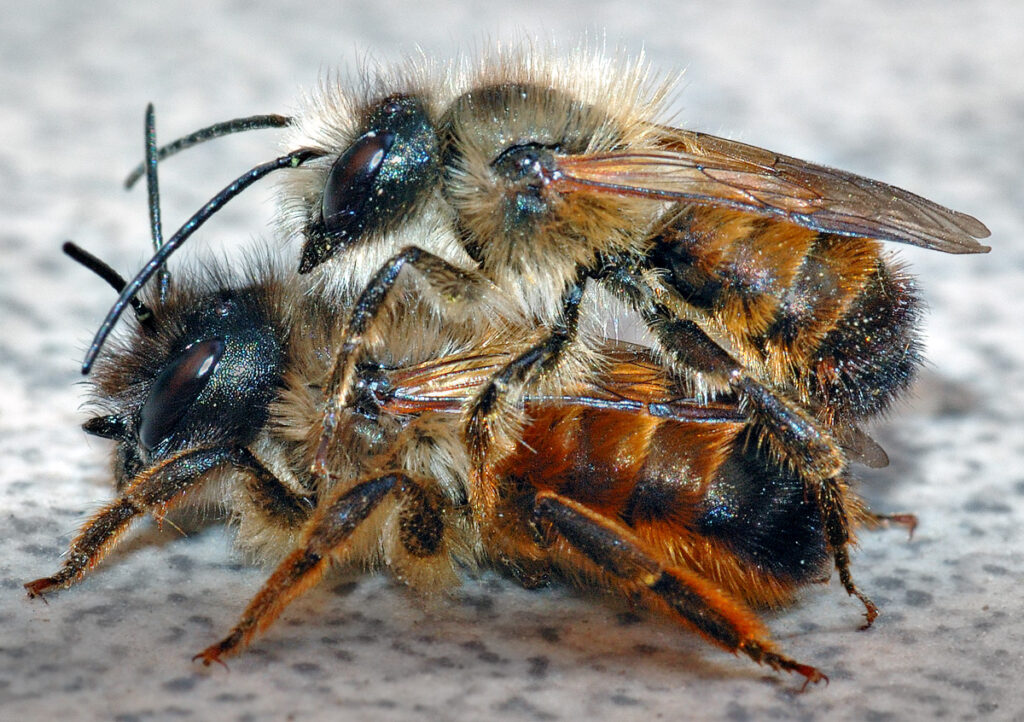
Halictus spp., or Sweat Bees
Sweat bees are tiny, thin, and usually have metallic green or blue bodies. Their length ranges from 0.3 to 1.3 centimetres. These all-purpose pollinators build their nests in subterranean caverns or on plant stems, where they can live in tiny social groups or alone. In addition to nectar and pollen, human perspiration is a known source of attraction for sweat bees, which they use as nutrition.
In conclusion, there are a wide variety of species within the diverse realm of bees, each with distinct traits, behaviours, and ecological roles. We can better promote the conservation of these important pollinators and guarantee the resilience and health of our ecosystems by developing a deeper understanding and appreciation for them.
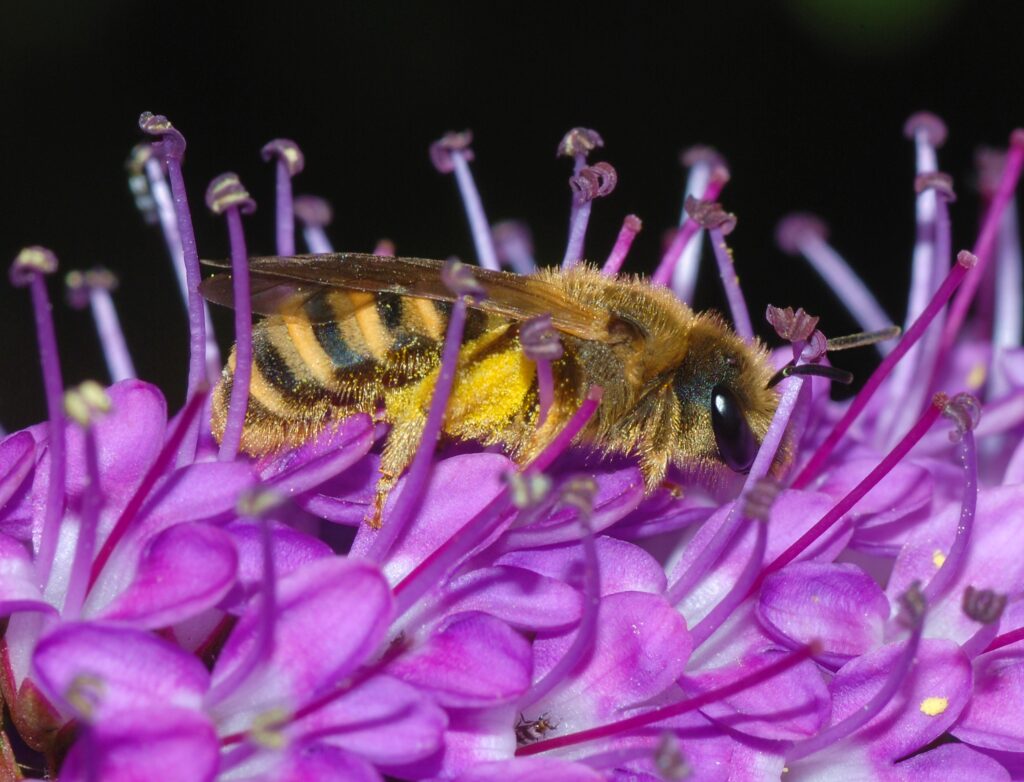
References:
1* Bee Species Table
United States Geological Survey (USGS) – Native Bee Inventory and Monitoring Laboratory:
https://www.usgs.gov/centers/native-bee-inventory-and-monitoring-laboratory/overview-north-american-bees
The Honey Bee Conservancy: https://thehoneybeeconservancy.org/
The Xerces Society for Invertebrate Conservation: https://xerces.org/pollinator-conservation/about-native-pollinators/native-bees
The Bees in Your Backyard: A Guide to North America’s Bees: https://press.princeton.edu/books/paperback/9780691160887/the-bees-in-your-backyard
